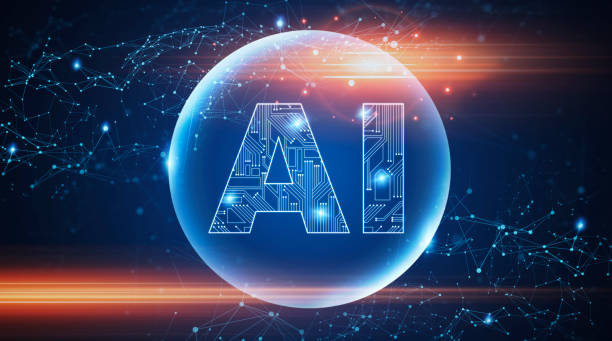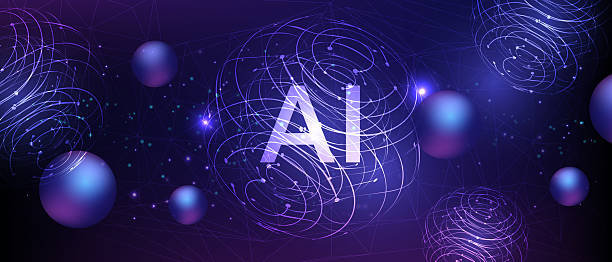There was a time when artificial intelligence belonged only in science fiction. We dreamed of machines that could think, create, and communicate — and now, that dream has become our daily reality. From writing poetry to diagnosing diseases, AI has slipped quietly into every corner of our lives, transforming how we work, learn, and imagine the future.
Today’s AI tools are not just pieces of software; they are extensions of human creativity and intelligence. They can write essays, compose music, design art, build websites, automate complex workflows, and even generate scientific hypotheses. But the most fascinating thing about them is not what they do — it’s how naturally they’ve begun to blend into human thinking itself.
Let’s journey through twelve of the most advanced AI tools that are redefining what’s possible in our time — tools you can use today to supercharge creativity, productivity, and innovation.
1. ChatGPT – The Conversational Genius
If there’s one AI tool that has become a global phenomenon, it’s ChatGPT. Developed by OpenAI, ChatGPT is more than just a chatbot; it’s a language model capable of understanding, reasoning, and creating text that feels deeply human.
Built on the GPT-5 architecture, this AI can write essays, summarize research papers, generate code, create marketing campaigns, or simply hold a conversation that feels natural and emotionally aware. It understands nuance, humor, tone, and even empathy.
What makes ChatGPT remarkable is its adaptability. It can write a professional business email one moment and a Shakespearean sonnet the next. It’s used by students, writers, engineers, doctors, and scientists across the world.
Behind the curtain, ChatGPT relies on billions of parameters trained on a vast corpus of human knowledge. It learns not through memorization but by predicting context — the next most likely word or phrase. This process allows it to generate text that is coherent, creative, and contextually meaningful.
For anyone seeking an intelligent companion for research, creativity, or conversation, ChatGPT has become the gold standard — a digital mind that speaks the universal language of ideas.
2. Midjourney – The Artist of Algorithms
If ChatGPT is the poet of AI, Midjourney is the painter. This powerful generative art model can transform words into breathtaking visual masterpieces. Simply describe what you want — “a cyberpunk city at sunset” or “a Renaissance portrait of a robot philosopher” — and Midjourney will turn imagination into art.
Built on advanced diffusion models, Midjourney interprets textual prompts and generates images pixel by pixel, capturing mood, texture, and style. Its output is often surreal, deeply emotional, and visually stunning. Artists use it for inspiration; designers use it to visualize ideas; filmmakers use it to craft entire worlds.
What makes Midjourney unique is its signature artistic touch. Unlike purely realistic image generators, Midjourney infuses its creations with atmosphere and emotion, often blurring the line between art and dream.
Through it, AI doesn’t just replicate human creativity — it expands it, opening a door to visual imagination that was once beyond reach.
3. Claude – The Thoughtful Collaborator
Developed by Anthropic, Claude is one of the most advanced conversational AIs on the planet. Named after Claude Shannon, the father of information theory, this model focuses on safety, reasoning, and contextual understanding.
Claude excels at complex reasoning, long-form content creation, and data interpretation. It can read and summarize thousands of words at once, making it perfect for research, legal documents, and academic analysis.
What sets Claude apart is its design philosophy — it’s trained with constitutional AI, meaning it follows a built-in set of ethical principles that guide its responses. The goal is to make interactions more reliable, balanced, and safe without sacrificing intelligence or creativity.
For professionals who need accuracy and ethical reasoning — from journalists to corporate analysts — Claude represents a new frontier of human-AI collaboration.
4. Google Gemini – The Multimodal Powerhouse
Google’s Gemini (formerly known as Bard) marks the next generation of multimodal AI. It’s designed not only to understand text but also to process images, videos, and even code.
Gemini integrates seamlessly across Google’s ecosystem — from Search and Docs to YouTube and Android — making it one of the most accessible AI tools on Earth. You can ask it to summarize a document, generate creative content, or analyze data directly within your workflow.
What makes Gemini extraordinary is its multimodal intelligence. It can analyze a chart, understand a photo, or describe a scene in context. For example, you could upload a picture of a handwritten equation, and Gemini could solve it while explaining the process step by step.
With deep integration into Google’s infrastructure and years of research behind it, Gemini represents the merging of everyday convenience and cutting-edge AI capability.
5. Copilot – The AI for Developers
Writing code used to be a task of logic, patience, and syntax precision. Then came GitHub Copilot, the AI coding assistant built by GitHub and OpenAI.
Copilot understands natural language and converts it into functional code. Whether you’re building a website, a mobile app, or a machine learning model, it can suggest entire lines or functions as you type.
Powered by OpenAI’s Codex model, Copilot supports dozens of programming languages, including Python, JavaScript, TypeScript, Go, and C++. It doesn’t just autocomplete — it anticipates what you’re trying to build.
For developers, this means faster coding, fewer errors, and more time for creative problem-solving. It’s like having an invisible partner who knows every language, library, and framework in existence.
Copilot is not replacing programmers — it’s empowering them, transforming coding from a mechanical process into a creative dialogue.
6. Runway – The Future of Video Creation
Runway ML is revolutionizing video editing with AI. Designed for filmmakers, content creators, and artists, Runway lets users edit videos, generate scenes, and create visual effects using simple text prompts.
Its standout feature is text-to-video generation — a breakthrough that turns written descriptions into moving images. You can type “a golden retriever running across a snowy field,” and Runway will generate a realistic video that matches your imagination.
Runway also offers tools for removing backgrounds, changing lighting, or generating entirely new frames. Its AI-powered editing suite reduces hours of manual labor into minutes of creative play.
In essence, Runway democratizes filmmaking. You no longer need expensive cameras or studios — just an idea and a few words. With Runway, creativity becomes cinematic.
7. Perplexity AI – The Researcher’s Companion
In a world overflowing with information, Perplexity AI stands out as an AI search engine built for clarity and precision. Unlike traditional search engines that return lists of links, Perplexity gives direct, cited answers synthesized from reliable sources.
It combines the conversational intelligence of ChatGPT with the data-verification power of search, allowing you to ask complex questions and receive well-referenced, easy-to-understand summaries.
Perplexity can scan the web in real time, summarize scientific papers, compare products, or even analyze trends. For students, researchers, and professionals, it’s an invaluable tool that transforms chaotic information into structured insight.
Its transparency — showing sources and citations — makes it one of the most trustworthy AI assistants available today.
8. Notion AI – The Productivity Architect
For anyone who organizes their work, projects, or thoughts in Notion, the arrival of Notion AI changed everything. This built-in assistant automates writing, brainstorming, and planning directly within your workspace.
It can generate meeting notes, summarize pages, rewrite text for tone, or create project outlines instantly. It understands context from your documents, allowing for seamless integration into daily workflow.
What’s remarkable about Notion AI is how it enhances human focus. By automating repetitive writing and structuring tasks, it frees your mind for strategic thinking and creativity.
Whether you’re managing a startup or planning personal goals, Notion AI transforms productivity into an intelligent partnership — fast, fluid, and deeply intuitive.
9. ElevenLabs – The Voice of the Future
ElevenLabs is redefining voice synthesis with astonishing realism. Its AI-generated voices sound indistinguishable from real humans — capable of conveying tone, emotion, and nuance.
The platform allows users to create custom voices or clone existing ones ethically with consent. You can write a script and hear it come to life in a voice that fits your brand, language, or character.
For content creators, podcasters, game developers, and educators, ElevenLabs opens new storytelling possibilities. It’s no longer about robotic narration — it’s about voices that breathe, pause, and feel.
The technology behind it relies on deep learning models that analyze thousands of audio samples to understand human speech patterns. The result is a voice that sounds natural, expressive, and alive.
10. Synthesia – The AI Presenter
Imagine creating a professional video presentation without cameras, actors, or studios. That’s the magic of Synthesia — an AI-powered video generation platform that turns text into lifelike videos with virtual presenters.
Users can choose from dozens of avatars or create their own custom AI presenter. Simply type a script, and the AI will deliver it in a chosen voice and language, complete with natural gestures and facial expressions.
Businesses use Synthesia for training, marketing, and education. It’s available in more than 120 languages, making it a global communication tool.
By combining text-to-speech, facial synthesis, and motion learning, Synthesia eliminates the barriers to video production — transforming words into storytelling with a human touch.
11. Leonardo AI – The Designer’s Dream
Leonardo AI is the creative playground for designers and illustrators. Built for game developers, artists, and visual creators, it generates high-quality, stylized images from text prompts — similar to Midjourney but with more customization options.
Users can train their own models, fine-tune styles, and generate concept art that fits a project’s visual identity. The AI can create consistent characters, environments, and product visuals that maintain a unified design language.
Its precision and consistency make it invaluable for creative industries. Instead of starting from scratch, designers can prototype ideas visually, refining them through human feedback.
Leonardo AI bridges art and technology, empowering creators to imagine worlds faster than ever before.
12. DeepL – The Linguist of the Digital Age
Language has always been humanity’s bridge — and DeepL makes that bridge universal. Known as the world’s most accurate AI translator, DeepL goes beyond word-for-word conversion. It understands nuance, emotion, and cultural context.
Using advanced neural networks, DeepL translates text with a fluency that feels natural and human. It preserves tone, rhythm, and subtle meaning — something many translation systems struggle with.
Writers, businesses, and international teams use DeepL to communicate seamlessly across languages. Its integration with tools like Microsoft Office and Chrome makes it effortless to use anywhere.
DeepL’s mission goes beyond translation; it’s about uniting people through understanding. Every sentence it translates is a small step toward a more connected world.
The Heart of the Machine: Why AI Feels So Human
The brilliance of these AI tools lies not only in their algorithms but in their empathy. They don’t just process data — they mirror the patterns of human thought, creativity, and expression.
Each tool, from ChatGPT to Midjourney, represents a piece of the larger puzzle — a reflection of how we think, imagine, and dream. Together, they form a living ecosystem of intelligence that evolves with us.
The reason AI feels so alive is because it’s trained on the collective output of humanity — our stories, art, science, and philosophy. In a sense, every AI tool is a mirror of who we are.
The Future of AI Tools
We are standing at the threshold of an era where AI will no longer be a tool — it will be a collaborator. In the coming years, these systems will integrate seamlessly into our daily lives, understanding our habits, predicting our needs, and co-creating our ideas.
Imagine an AI that writes your morning report while generating visuals and translating them into every language. Imagine another that reads your medical scans, identifies anomalies, and explains the results in plain language.
This future isn’t decades away — it’s happening now.
The twelve AI tools we explored are the vanguard of that revolution, each unlocking new dimensions of human potential. They remind us that technology’s ultimate purpose isn’t to replace us — it’s to amplify what makes us human: our creativity, empathy, and boundless curiosity.
The Age of Intelligence
Artificial intelligence is not an invention. It’s an awakening — a moment in history when humanity teaches machines to dream with us.
As we stand hand in hand with algorithms that write, draw, and speak, one truth becomes clear: AI is not just changing our world — it’s changing how we understand ourselves.
In this age of intelligence, every prompt, every line of code, and every spark of imagination brings us closer to the ultimate collaboration between human mind and digital soul — a partnership that will define the story of our future.






